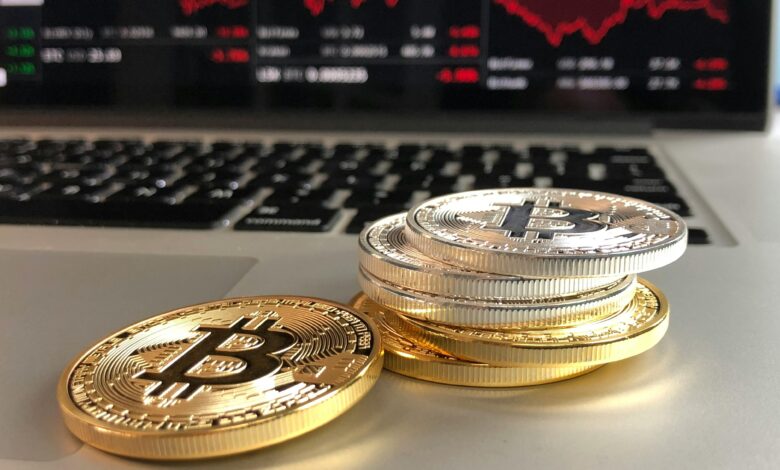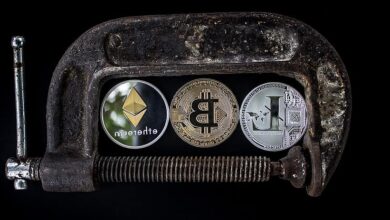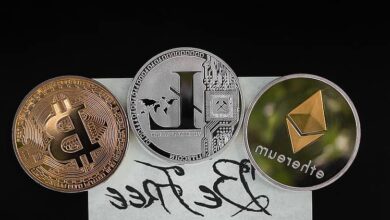Stablecoins: Digital Stability in a Volatile Crypto World

The spectacular advent of cryptocurrency offered the world a revolutionary, decentralized alternative to traditional, centralized fiat money. Digital assets like Bitcoin and Ethereum demonstrated the unprecedented power of cryptographic security and distributed ledger technology.
However, the market that emerged from this innovation has been characterized by extreme and often chaotic volatility. Prices can swing wildly by significant percentages within a single day. This inherent instability, while attractive to speculative traders seeking high returns, makes the assets fundamentally unsuitable for everyday commerce, accurate accounting, and reliable contractual agreements.
No business can sign a long-term contract when the value of the payment asset might halve overnight. Stablecoins emerged precisely to bridge this critical gap. They are a specialized class of digital assets engineered to maintain a constant, steady value, typically pegged 1:1 to a stable, external reference like the U.S. dollar.
This groundbreaking innovation combines the technological benefits of blockchain—speed, transparency, and borderlessness—with the essential stability required for real-world financial transactions. Understanding the various models, mechanisms, and risks of stablecoins is paramount. They function as the indispensable liquidity engine and the stable foundation that supports the entire complex ecosystem of Decentralized Finance (DeFi).
The Necessity of Price Stability
The core problem that Stablecoins were created to solve is the fundamental price volatility of major cryptocurrencies. Volatility makes assets like Bitcoin excellent for speculative trading or as a long-term store of value. However, it renders them practically useless as a reliable medium of exchange. Imagine accepting payment for a service in an asset that instantly loses 10% of its purchasing power before you can spend it. This risk is unacceptable for businesses and consumers engaging in routine commerce.
Traditional fiat currencies, issued and controlled by central banks, maintain stability because their value is managed through monetary policy and the government’s full faith and credit. Stablecoins seek to replicate this essential price stability in the decentralized digital realm. They achieve this stability through various collateralization and algorithmic mechanisms.
Stablecoins are critical for enabling the vast majority of activities within the Decentralized Finance (DeFi) ecosystem. DeFi services, such as lending, borrowing, and yield farming, require a stable, predictable asset to function effectively. Without a stable unit of account, lending contracts would be instantly exposed to crippling, unpredictable liquidation risks. Stablecoins act as the essential, neutral anchor for this new financial system.
Furthermore, they serve as crucial on-ramps and off-ramps between the fiat world and the volatile crypto market. Traders use stablecoins to lock in profits quickly without moving back to a traditional bank. This ability to instantly secure value is vital during periods of extreme market volatility.
Model One: Fiat-Collateralized Stablecoins
Fiat-collateralized stablecoins are the most common and simplest model for achieving price stability. The concept relies on holding an equivalent amount of fiat currency—most frequently the U.S. dollar—in reserve for every digital coin issued. This reserves held provides a direct, tangible backing for the digital asset.
A. Reserve Requirements
For every digital coin issued and circulating, the issuer holds one unit of the corresponding fiat currency (e.g., one U.S. dollar) in a traditional bank account or secure reserve. This 1:1 peg is maintained by the promise of the issuer to redeem the stablecoin for the underlying fiat currency at any time. This strict ratio is the foundation of market trust.
The reserves must be held by a regulated financial entity and should ideally be audited regularly by an independent accounting firm. Transparency and verifiability of the actual assets held in reserve are paramount for maintaining the market’s confidence in the stablecoin’s value. Any suspicion regarding the adequacy of the reserves can trigger massive panic and de-pegging.
B. Issuance and Redemption
The issuer controls the issuance and redemption process. When a user sends one dollar to the issuer, one stablecoin is minted and delivered to the user’s digital wallet. When the user redeems the stablecoin, the coin is “burned” (taken out of circulation), and one dollar is returned to the user’s bank account. This mechanical process ensures the supply remains perfectly matched to the fiat reserves.
C. Trust and Centralization Risk
While this model is technologically decentralized on the blockchain, it carries a significant degree of centralization risk. The user must trust the central issuing entity to honestly manage the underlying fiat reserves. Regulatory compliance and the security of the traditional bank accounts are external points of failure. The issuer is subject to the legal and regulatory jurisdiction of the country where the reserves are held.
Model Two: Crypto-Collateralized Stablecoins
Crypto-collateralized stablecoins achieve price stability by backing their value with other volatile cryptocurrencies, such as Ether or Bitcoin, instead of traditional fiat money. This complex model requires using over-collateralization to manage the inherent volatility of the underlying assets. This system avoids reliance on traditional banks.
D. Over-Collateralization
Since the backing asset is volatile, the system requires over-collateralization. To borrow $100 worth of the stablecoin, the user might be required to lock up $150 worth of Ether in a smart contract. This provides a substantial buffer against immediate drops in the collateral’s value. The high ratio of collateral to loan is essential for stability.
E. Liquidation Mechanism
A crucial component of this system is the liquidation mechanism. If the value of the collateral falls too close to the stablecoin’s value (e.g., the $150 Ether drops to $105), the smart contract automatically liquidates the collateral. This forced sale protects the integrity of the stablecoin peg. This automatic, code-enforced liquidation is necessary to prevent the system from becoming under-collateralized.
F. Decentralization and Transparency
These stablecoins offer a greater degree of decentralization because the collateral is held in transparent, auditable smart contracts on the blockchain. The rules of issuance and liquidation are transparently executed by the code itself. This reduces the need to trust a centralized human issuer. The entire system operates without the traditional banking sector.
Model Three: Algorithmic Stablecoins

Algorithmic stablecoins are the most innovative and riskiest model. They attempt to maintain their price peg solely through mathematical code and dynamic incentives, without any substantial underlying collateral. Their stability relies entirely on the market’s faith in the algorithm’s ability to maintain the balance. This is the riskiest, yet most purely decentralized, structure.
G. Supply and Demand Mechanism
The algorithm maintains the peg by dynamically adjusting the stablecoin’s supply. If the stablecoin’s price falls below $1.00 (demand is low), the algorithm automatically reduces the supply by buying up coins or incentivizing users to “burn” them. If the price rises above $1.00 (demand is high), the algorithm automatically mints and issues new coins to increase the supply. This supply adjustment mechanism attempts to restore the price equilibrium.
H. Secondary Token Integration
These systems often rely on a secondary, volatile token to absorb price fluctuations. When the stablecoin falls below the peg, the algorithm incentivizes users to swap the stablecoin for the secondary token. This removes stablecoins from circulation. When the stablecoin is above the peg, the secondary token can be redeemed for newly minted stablecoins at a profit. The secondary token’s volatility is crucial for stabilizing the primary coin.
I. Risk of Death Spiral
Algorithmic stablecoins carry the severe risk of a “death spiral.” If market confidence collapses during a sharp downturn, the algorithm may fail to restore the peg. The value of the secondary token collapses, and the mechanism cannot incentivize users to absorb the stablecoin’s downward pressure. This can lead to a complete and rapid collapse of the system. This model is exceptionally fragile during a market panic.
The Integration into Decentralized Finance (DeFi)
Stablecoins are the essential, critical lifeblood of the entire DeFi ecosystem. Their price stability allows for the creation of complex, sophisticated financial services that require predictable value. Without stablecoins, the functionality of DeFi would be severely limited.
Stablecoins are used as the primary asset for decentralized lending and borrowing. Users deposit stablecoins to earn interest (lending). Other users borrow stablecoins to fund trading or arbitrage strategies. This creates efficient, on-chain money markets.
They are also the main trading pair on Decentralized Exchanges (DEXs). Stablecoins allow users to exit a volatile asset like Ether or Bitcoin instantly without leaving the decentralized environment. This provides immediate shelter from sharp market downturns.
Yield farming strategies heavily rely on stablecoins. Investors lock up stablecoins in liquidity pools to earn high interest rates or rewards. The stability of the asset allows investors to seek high returns without taking on significant, unnecessary price volatility risk. Stablecoins have enabled the massive growth of the DeFi sector.
Regulatory Scrutiny and Future Outlook

The massive market capitalization and systemic role of stablecoins have attracted intense regulatory scrutiny globally. Regulators recognize that the failure of a major stablecoin could destabilize traditional financial markets. Legislation is being actively developed to manage this risk.
The primary regulatory concern is the adequacy and quality of reserves held by fiat-collateralized issuers. Regulators seek mandatory, real-time audits and requirements that reserves be held in highly liquid assets like cash or short-term government bonds. This is to ensure 1:1 redeemability under all market conditions.
Regulators are also focused on consumer protection and Anti-Money Laundering (AML) compliance. Stablecoin issuers must adhere to strict Know Your Customer (KYC) protocols to prevent their digital assets from being used for illicit activities. New rules will impose banking-like oversight on major issuers.
The future of stablecoins points toward increased central bank oversight and a push toward standardization. Competition is also emerging from Central Bank Digital Currencies (CBDCs), which will offer a government-backed, digital alternative to both fiat and decentralized stablecoins. Stablecoins will likely face a much tighter regulatory environment in the coming years.
Conclusion
Stablecoins are the indispensable digital assets that successfully bridge the gap between blockchain speed and necessary price stability.
Fiat-collateralized models maintain their peg by holding a 1:1 reserve of traditional currency but carry inherent centralization risk.
Crypto-collateralized models utilize over-collateralization and automatic liquidation mechanisms to manage the volatility of their backing assets.
Algorithmic stablecoins rely on complex, dynamic supply-and-demand adjustments but carry the severe risk of a catastrophic death spiral failure.
Stablecoins are the vital, stable medium of exchange that allows the vast, complex ecosystem of Decentralized Finance (DeFi) to operate reliably.
Their primary utility is providing traders with instant shelter from the extreme volatility inherent in major cryptocurrencies like Bitcoin.
The massive growth of this market segment has triggered intense, mandatory regulatory scrutiny focused primarily on the adequacy of reserve assets.
New regulations aim to impose strict banking-like oversight to ensure consumer protection and systemic financial stability globally.
The future is likely to see standardization in reserve requirements and new competition from government-issued Central Bank Digital Currencies (CBDCs).
Stablecoins ensure that the technological benefits of the blockchain can be practically applied to routine commerce and long-term contracts.
This innovation is critical for providing essential liquidity and acting as the reliable unit of account throughout the entire digital economy.
Stablecoins are the necessary anchors that guarantee the continued, stable evolution of the future of digital finance.


